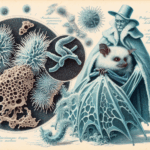Ben Lamm has no interest in building Jurassic Park. That’s what he told the SXSW crowd, anyway. The CEO of Colossal, a biotech startup with a $10.2 billion valuation and a penchant for reviving ancient species, insists his mission is far more noble: undoing humanity’s ecological sins with a “de-extinction toolkit.”
Lamm sat across from actor (and Colossal board member) Joe Manganiello, discussing the company’s grand vision—woolly mammoths wandering the Arctic, dodo birds back from oblivion, Tasmanian tigers reclaiming Australia. A sci-fi fever dream with a venture capital budget.
The obstacles? Minor details, like viable DNA. Dinosaurs are out—DNA degrades after a few million years, so Hollywood’s T. rex fantasies are safe. Mammoths, thylacines, and dodos, however, have well-preserved genetic material just begging for a comeback tour.
Founded in 2023 by Lamm and Harvard geneticist George Church, Colossal has set an ambitious goal: woolly mammoth hybrid calves by 2028. The plan is to release them into the tundra, where they might help restore the ecosystem by trampling down snow, keeping the permafrost intact, and—if all goes well—slowing climate change. Yes, there’s a world in which resurrected elephants with fur are climate warriors.
Investors seem fully on board. Hundreds of millions of dollars have flooded into Colossal’s coffers, proving that the market for once-extinct creatures is surprisingly lucrative. Lamm believes there are “billions of dollars” to be made in rewilding efforts and carbon sequestration. Saving the planet, but make it profitable.
Colossal has already spun off two companies—one focused on genetic applications, the other still under wraps. But the side projects don’t stop there. A recent headline-grabber? The “woolly mouse,” a genetically engineered rodent that sports mammoth-like fur thanks to a blend of mouse and mammoth hair-growth genes.
Critics argue the woolly mouse is more of a flex in mouse genetics than a crucial step toward mammoth resurrection. Lamm disagrees. “It showed us that, initially, our edits that we were making for the mammoth are the right edits,” he said. Translation: if we can make a mouse fuzzy, we can make an elephant prehistoric.
And if that wasn’t futuristic enough, AI is part of the equation, too. Lamm called AI, synthetic biology, and advanced computing the “most dangerous” combination of technologies the world has ever seen. Dangerous? Maybe. But also, apparently, necessary to rewrite the rules of extinction.
Five Fast Facts
- The woolly mammoth’s closest living relative is the Asian elephant, which shares about 99.6% of its DNA.
- The last known dodo sighting was in 1662, meaning humans wiped them out in less than a century after discovering them.
- Tasmanian tigers (thylacines) were officially declared extinct in 1936, but unconfirmed sightings still spark conspiracy theories.
- George Church, Colossal’s co-founder, was one of the pioneers of CRISPR gene-editing technology.
- Ben Lamm also co-founded Hypergiant, a company that develops AI for defense, space, and industry.





